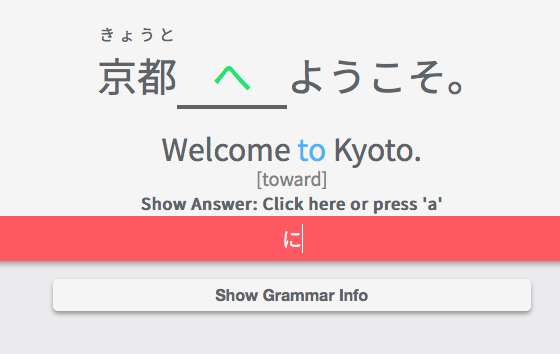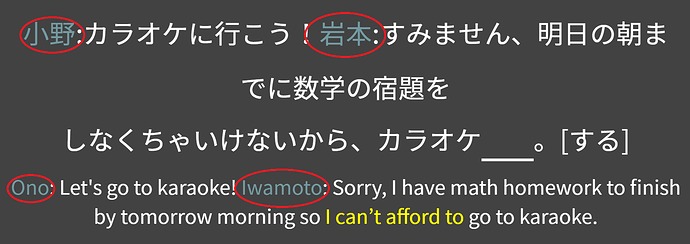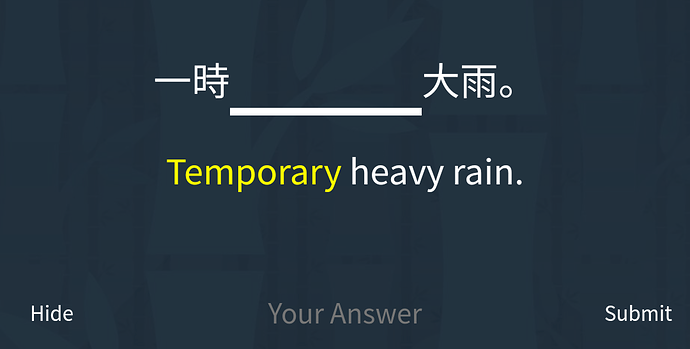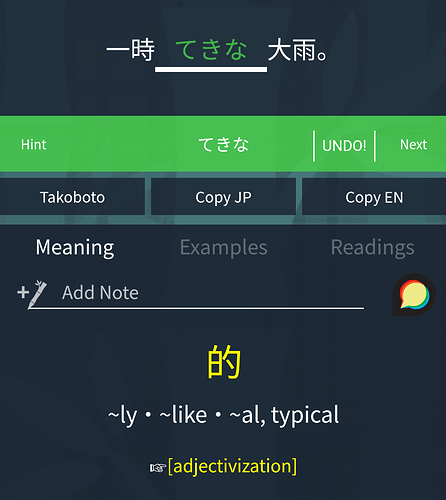There isnt  60 is next!!
60 is next!!
Any chance we can see all the available Achievements that can be obtained (similar to the XP and Level badges)?
i think i posted in the wrong forum. but here is a css fix advice for the settings page overflow bug
I couldn’t be sure since there have been a few problems with getting badges at times. 
Sorry, but im not an admin 
Just pushed a fix!
@Juppy The achievements are top secret. 
We can give some thought to showing them all.
You could have a mix.
I think it would be great to at least show the day streak badges, since it could give someone that extra push to keep going when they are near the next badge.
The excorcist ones you could maybe keep secret because there’s not much control over that and it requires us to make mistakes first. Also some people have ghost reviews turned off completely. (Though if you show the badge it might motivate people to turn them on.  )
)
But having secret ones would be fun. Like doing reviews on a specific day (BunPros Anniversary?) or having the same/more exp as the first 8 digits of Pi. Arbitrary things like that.
I like the idea of only showing the next streak out 
Have 10 and 20 day streaks? You can see the 30, but 60 is still hidden until you earn that 30!
I also like the idea for “special days,” especially since Japan likes to celebrate all sorts of them. Like… I think 2/2 (Feb. 2) just now was “ツインテールの日” because of the two 2’s. I saw tons of art with twintail hairstyles then last year; didn’t notice much this year for some reason. But, I think they’re only as well-known as the West’s “Talk Like a Pirate Day,” or “May the 4th (be with you).”
8月10日 is another one, ハートの日, or  の日。I think it has to do with the はち and とう readings?
の日。I think it has to do with the はち and とう readings?
BTW, @Jake, the N2 Lesson 2「とか」grammar point still only has 3 sentences to it 
Also also:
I’ve noticed that ALL reviews that use this text color get “stuck” in the hint cycle. I literally cannot hide this hint anymore.
Two questions about this sentence:
- いろいろと? Why と?
- Should this be phrased as ~に向けるために or something? The first half is meant to say, “for the purpose/sake of ______,” or “with ______ in mind,” and I’m not sure that gets conveyed with the て-form by itself. Am I wrong?
(Also, is there a better thread to use for discussing review sentence structure, etc.?)
Here on of many examples where the sentence translation completely differs from the grammar translation:
I had no clue at all what you’re looking for. No hints, wrong tranlation (the “one hour” part is missing completely)
This is the grammar point:
You should at least add the “adjectivization” hint to the review sentence since “temporary” itself obviously has nothing to do with the grammar.
FEATURE REQUEST:
since there are still dozens of buggy sentences like this (and all the sentences with missing alternative answers) it would be nice to have a “skip this sentence” button which appears after typing in a wrong answer.
If users are sure that Bunpro made a mistake in that sentence, they can skip it to avoid a wrong answer. It doesn’t really makes sence that users destroy their accuracy because of mistakes on Bunpro’s side. And using the “oops” button doesn’t make much sense either.
The “skip this sentence” button would preserve the current SRS for that grammar point and remove the skipped review sentence from the queue. Instead, on the next day (or sooner or later) the next sentence of that grammar point will be reviewed.
It’s not wrong. 一時的 means temporary.
And I really don’t think they need to make your “Skip Sentence” a feature that seems like weird solution to the problem. If you find that the the roof is leaking, don’t ask for buckets instead of just telling them where the leak is so they can patch it. Yeah some of the sentences are wonky, report them individually and they can correct them.
Also, I don’t really get why you can’t use the Oops button in that situation. I use it both as a “Oops I was wrong” and “Oops Bunpro’s wrong”.
Sure. But without 的 it means “one o’clock” or “one hour” and only that was given without any hints…
I report all bugs I find with the “report error” button and via forum. But how can that solve the situation during reviews? Bunpro is not that fast 
Interesting approach. I don’t think that’s what the “oops” button is intended for. I only use it for typos.
@lopicake Thank you for your feedback on how to approach different badges. These are all great suggestions! We have quite a few badges that we would like to incorporate into Bunpro and we will consider all of the points that you have made (whether to keep them hidden or give sneak peeks) going forward. Thank you also for discussing 的 and Bunpro features with @Anthropos888. We will give this grammar point some thought, as well as consider adding an alternative to the “oops!” button.
We hope to have a new and improved feedback system up and running soon that will allow us to pinpoint problem items and get them fixed more quickly. This new system will also notify you when we make a change as well as mark it as being reported so that others will know that we are working on getting it corrected. Stay tuned. Cheers!
@Kai Thank you for all of your feedback! Adding special days to badges is a great idea. We will see what we can do. Let us know if you have any other suggestions!
The N2 Lesson 2, とか is a grammar point that we are consider moving or removing completely from Bunpro and that is why it did not get the special treatment. We apologize for the inconvenience!
The inability to cycle hints on sentences that have the teal colored text is a known bug that we hope to push a fix for in the next update. Thank you for your patience!
Regarding your question about にむけて, the と following いろいろ makes いろいろ (normally a な-adjective) an adverb (so-called と adverb) that is modifying 調べる. Here, にむけて is acting as a conjunction and conveys that the person is setting his/her sights on the career consultation day. So, rather than the speaker having a purpose, they are looking toward the career consultation day. Perhaps thinking of にむける as actually, physically facing toward something will help clear up any confusion? Maybe @mrnoone can help me expand on this? We are working through the site, linking each grammar point to their own grammar thread here on the forums and hope to have a space to discuss each individual grammar point available soon. Cheers!

I know this is an expression, but I couldn’t remember if it was へ or に. Is it actually wrong to say に? Or just “wrong” because the expression uses へ?
にようこそ isn’t necessarily wrong, but へようこそ is much more common.
If you do a google search for both phrasings inside “quotation marks,” you get:
- へようこそ: About 117,000,000 results
- にようこそ: About 10,500,000 results
However, since the hint is [toward], maybe に is technically not applicable here.
に is much more “direct” than へ.
True. I’m just not sure marking me wrong is necessarily the correct though. Doesn’t BP have a shake that comes with a hint like “looking for something different/similar”? I think that would fit better if に is correct, just not typical.
Personally I always look with trepidation at the hints for に/へ because I never feel like the hints are different enough that I can say with complete confidence which one BP is asking for.
They do have the feature you’re describing. But Placeへようこそ is pretty much a set phrase, so I think it’s okay to mark に wrong here.








